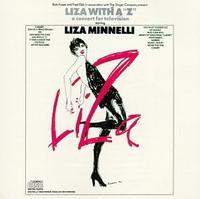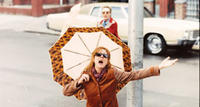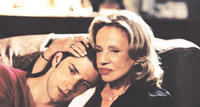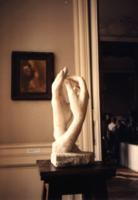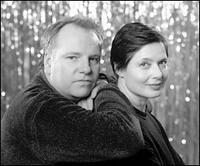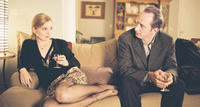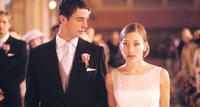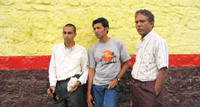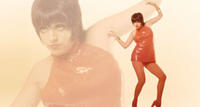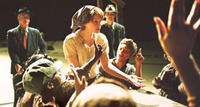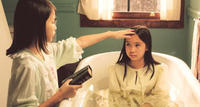 The people in this photograph all won awards at the Toronto International Film Festival this year and I have no clue who any of them are. Yes, the TIFF prizes have all been announced and once again I am scratching my head. It seems every year these awards go to films I didn’t see. No, not just films I didn’t see, films I barely remember reading about (and I read the program book from start to finish). I am always amazed when I look at this list, until I remember that those prize juries (except the FIPRESCI prize - voted on by the international press corps) are mostly just two or three specific indivduals. And juries are sometimes bewildering. Let’s not forget L’Enfant and Cannes.
The people in this photograph all won awards at the Toronto International Film Festival this year and I have no clue who any of them are. Yes, the TIFF prizes have all been announced and once again I am scratching my head. It seems every year these awards go to films I didn’t see. No, not just films I didn’t see, films I barely remember reading about (and I read the program book from start to finish). I am always amazed when I look at this list, until I remember that those prize juries (except the FIPRESCI prize - voted on by the international press corps) are mostly just two or three specific indivduals. And juries are sometimes bewildering. Let’s not forget L’Enfant and Cannes.I'm sure these people are all very worthy. But the truth is that prizes just aren't given out for enough of the right kinds of films. And also, there are prizes that should go for the lesser moments of the festival: longest introductory speech, most incoherent Q and A, stupidest scheduling, worst handling of a projection crisis, worst programmer fatigue errors in intro speeches, etc. I will get to all these later. But being more celebratory by nature, I am more inclined to think in terms of what I am left with: the lingering moments/memories, for now.
Here, then, are the twenty or so most vivid impressions. They are sometimes whole moments and sometimes fleeting experience. They occur both offscreen and on. Sometimes just colours and shapes, sometimes a single line or series of words. Here’s this year’s crop. Many have already been referred to in previous posts so look there to find out more. And in all cases, they are really just personal. But they may convey enough meaning to hook someone into seeing the film. Here goes.
1. Juliette Binoche’s transcendently sad face as Mary Magdalene, responding to an angel’s query “Woman why are you weeping” with “They have taken my lord and I do not know where they have laid him” in the opening scene of Abel Ferrara’s Mary.
2. Isabella Rossellini's story about meeting Anna Magnani as a child in the post-screening dialogue of My Dad is 100
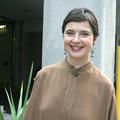 Years Old/Rome, Open City.
Years Old/Rome, Open City.3. Liza Minnelli soaring on stage and doffing a white boa to begin singing “Yes” in Liza with a Z. Witnessing her deeply felt excitement at the restoration of the film. Actually, just about anything from that afternoon.
4. Valeria Bruni-Tedeschi considering both her ending marriage and a sculpture in the brightly sunlit Musee Rodin, in one breathless long take of Nobuhiro Suwa’s Un Couple Parfait.
5. The hands dipping in the bowl of holy water as monks enter liturgy in Philip Groening’s, Into Great Silence. And the resonating rings in the water after they are gone.
6. The silent, stunning images of the Guggenheim Museum Bilbao and particularly a shot of its gold metal reflected in the adjacent river in Sydney Pollack’s Sketches of Frank Gehry.
7. Susan Sarandon’s face, listening to a gospel choir sing, (before joining them in a rousing version of Pieces of My Heart), while digesting the fact of her husband’s affair in John Turturro’s Romance and Cigarettes.
8. The frantic, desperate face of Didi (Seema Biswas) stuffing child-widow Chuiya (Sarala) through the window of a train into the arms of a Gandhi disciple (John Abraham) in Deepa Mehta’s Water.
9. Talking for 20 minutes in the theatre lobby with Japanese filmmaker Nobuhiro Suwa through my Japanese student about the making of his beautiful film, Un Couple Parfait.
 10. Susan Sarandon’s softshoe shuffle at her husband’s memorial in Elizabethtown.
10. Susan Sarandon’s softshoe shuffle at her husband’s memorial in Elizabethtown.11. An American, an Israeli and a Palestinian woman (Natalie Portman, Hanna Laslo and Hiam Abbas) jiving in the front seat of an SUV to middle eastern pop music, en route to cross the
Jordanian border in Amos Gitai’s Free Zone.
12. Joyce Wieland talking about the women who witness the great art of their time, unconsciously comparing herself to Madame de Stael, seated near a Venetian canal in Don Owen’s Snow in Venice.
 13. The first kissing scene in the back of the flowershop between Luce (Lena Headey) and Rachel (Piper Perabo) in Imagine Me and You.
13. The first kissing scene in the back of the flowershop between Luce (Lena Headey) and Rachel (Piper Perabo) in Imagine Me and You.14. Susan Sarandon at the premiere of Elizabethtown, responding to the girl glee in the audience over the arrival onstage of Orlando Bloom by shaking her head and body and screaming along with them, “it’s him! It’s him! Aaaghh!”
15. The lush bright green vegetation and contrasting blue sky-coloured sea of Mauritius rolling past as the lovers chat in the back of the pickup truck in Barlen Pyamootoo’s Benares.
16. Blind and deaf Theresa Chang meeting the man who has been cooking for her by studying his sad face with her hands in Eric Khoo’s sublime Be With Me.
17. Jeanne Moreau’s Grandmother embracing her grandson in farewell for what she knows will be the last time in Francois Ozon’s Le temps qui reste. The roses she gave him in that moment, slowly fading in a glass in the man’s apartment a few scenes later.
18. Boys exuberantly jumping off an oil tanker after yellow barrels of oil they will push to shore in Mohammad Rosoulof's Iron Island.
19. Sitting in the Press/Industry library, watching Rashid Masharawi's Attente, while simultaneously watching Tsai Ming-liang’s The Wayward Cloud on one nearby tv and Patrice Chereau’s Gabrielle on another - without sound. On 10 televisions, simultaneous images of some of the year’s best cinema, running in silence. (Viewers wear headphones.)
And uncategorizable: running into my students working as volunteers - everywhere. Seeing some of them over and over, attending screenings with them and comparing notes afterwards. I always learn so much!


